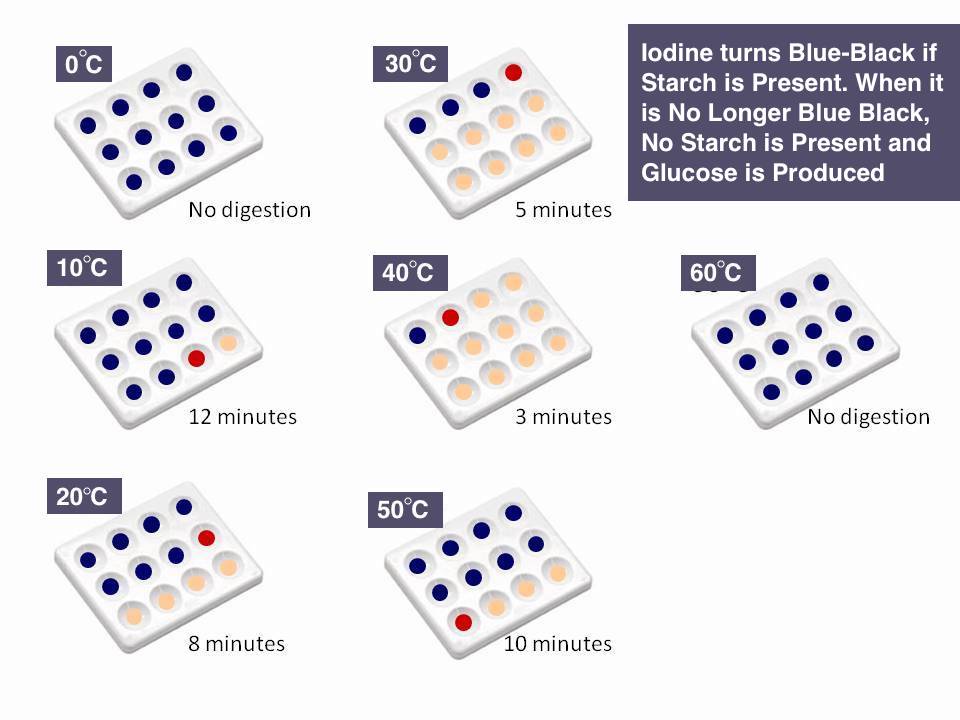INVESTIGATING EFFECT OF TEMPERATURE ON ENZYME ACTIVITY
|

Diagram Showing the Spots of Starch and Amylase in Wells
|
INDEPENDENT VARIABLE: Temperature of Starch Solution (0, 10, 20, 30, 40, 50, 60°C)
|
METHOD:
Test tube of Starch solution is placed in Water bath of set temperature for several minutes (0, 10, 20, 30, 40, 50, 60°C)
Solution of Amylase enzyme is added into test tube of Starch solution
Immediately after Amylase is added into test tube, pipette is used to add droplets of mixture into wells
Immediately after mixture is added into wells, a few drops of Iodine solution is added
Process is repeated in increments of fixed time (seconds) until Iodine turns orange, indicating that Starch has completely broken down into Glucose
Time taken for Starch to be completely broken down is compared to that of each respective temperature (time taken for Iodine solution to turn orange with each respective temperature)
|
RESULT:
|
Really helpful site, but a lot of this seems to be mistaken, and this whole practical was badly written and confusing. Overall, great site though!
ReplyDeletenah it's not confusing at all, I think your brain is just a bit slow that it can't process this complicated info. you should do entry level science, maybe that will be at your brain processing capacity level :)
Deletecheers!!
bit harsh...
Deletewhat a nice person
Deleteikr
Deletelmao
DeleteI think what is confusing is showing the well where there is no more starch as red. It will not be red but the orange of iodine.
DeleteDescribe how you would test for the product formed?
ReplyDeletewhats the well with the red color
ReplyDeletev
ReplyDeletef
why would it turn orange and not blue/black
ReplyDeleteBecause there is no more starch it stays orange
Delete